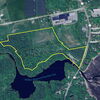Processing Your Payment
Please do not leave this page until complete. This can take a few moments.
- News
-
Editions
-
- Lists
-
Viewpoints
-
Our Events
-
Event Info
- Women's Leadership Forum 2025
- On the Road with Mainebiz in Bethel
- Health Care Forum 2025
- On The Road with Mainebiz in Greenville
- On The Road with Mainebiz in Waterville
- Small Business Forum 2025
- Outstanding Women in Business Reception 2025
- On The Road with Mainebiz in Bath
- 60 Ideas in 60 Minutes Portland 2025
- 40 Under 40 Awards Reception 2025
- On The Road with Mainebiz in Lewiston / Auburn
- 60 Ideas in 60 Minutes Bangor 2025
Award Honorees
- 2025 Business Leaders of the Year
- 2024 Women to Watch Honorees
- 2024 Business Leaders of the Year
- 2023 NextUp: 40 Under 40 Honorees
- 2023 Women to Watch Honorees
- 2023 Business Leaders of the Year
- 2022 NextUp: 40 Under 40 Honorees
- 2022 Women to Watch Honorees
- 2022 Business Leaders of the Year
-
-
Calendar
-
Biz Marketplace
- News
-
Editions
View Digital Editions
Biweekly Issues
- April 21, 2025 Edition
- April 7, 2025
- March 24, 2025
- March 10, 2025
- Feb. 24, 2025
- Feb. 10, 2025
- + More
Special Editions
- Lists
- Viewpoints
-
Our Events
Event Info
- View all Events
- Women's Leadership Forum 2025
- On the Road with Mainebiz in Bethel
- Health Care Forum 2025
- On The Road with Mainebiz in Greenville
- On The Road with Mainebiz in Waterville
- + More
Award Honorees
- 2025 Business Leaders of the Year
- 2024 Women to Watch Honorees
- 2024 Business Leaders of the Year
- 2023 NextUp: 40 Under 40 Honorees
- 2023 Women to Watch Honorees
- 2023 Business Leaders of the Year
- + More
- 2022 NextUp: 40 Under 40 Honorees
- 2022 Women to Watch Honorees
- 2022 Business Leaders of the Year
- Nomination Forms
- Calendar
- Biz Marketplace
An energy triple play: | A smart grid, lower energy costs and decreased climate change
Attorney and chair of Preti Flaherty’s energy and utilities practice group, co-chair of its climate strategy group and co-founder of the Energy Law Institute, a national renewable energy think tank
Energy experts call it the “Prius Effect”: Drivers of the Toyota Prius, who face screens displaying instantaneous data on their driving, tend to alter their habits to save gasoline. This efficient car (50 mpg) empowers greater savings because it gives feedback to the driver. Smart.
Now consider the electric grid. If you can even read your electric meter, you know it tells you only one number, without providing you any useful data like what you can do instantaneously to use less electricity. As a result, few consumers know from moment to moment how they can reduce their costs and, thereby, the overall cost of the grid. No feedback, no Prius Effect.
We are not alone in this lack of data: Maine’s big electric utilities do not know, from moment to moment, how much power is moving where on most of their lines, or how this flow could be decreased. The grid operator knows which power plants are operating, but only when consumers’ meters are read on monthly cycles does anyone know where it all went. Smart? Not exactly.
All this could change, with valuable results, like lower power costs, lower greenhouse gas emissions from power plants and vehicles, and decreased reliance on foreign oil. Motor fuels account for most oil imports and one-third of all domestic greenhouse gas emissions. They are by far the hardest greenhouse gas problem to solve. The key to it all is the electric grid — but not the grid of today.
Today, the grid is a profit center for transmission utilities and power generators, rather than an interactive system to serve the public interest. When increasing consumer demands create higher peaks, Maine’s utilities receive premium rates of return (13.11%!) to build new transmission. Generators are paid above-market costs to provide new capacity. Consumers receive feedback years later as increased costs, not instantaneously as with the Prius. The result is a power industry rewarded when consumers, without feedback on their choices, do exactly what they shouldn’t do to lower energy costs and diminish climate change. Really not smart.
Regulators must resist these incentives for utilities to build billions of dollars of unnecessary transmission to enhance their profits. Grids should be expanded only when it is the least costly option. Utilities should bear the burden to show that consumer actions, including conservation, demand response, smart meters, distributed generation and hundreds of other smart grid technologies, cannot meet the anticipated need at a lower cost. Only this will allow development of the smart grid and allow the Prius Effect to save dollars and our climate.
The second step, one utilities should like, is to connect hybrid vehicles like the Prius directly to the electric grid. Hybrids are excellent adaptations to consumers’ needs. They offer savings-enabling feedback and do not rely entirely on batteries — a technology presently with limitations. When we create interactivity between the grid and hybrids, two phenomena occur. We can charge hybrids off the grid during low-cost periods. Plus, when the grid suffers an outage or needs more power, the hybrid can become a distributed generator — it can be “plugged” in and deliver electric energy to the grid. You might be surprised how much electricity is stored in a high-tech car battery: The all-electric Tesla sports car charges at 220 volts in two hours and can power a large home for four days.
Further, power plants are less greenhouse-gas intensive than motor fuels — particularly when grid-scale power comes partially from renewable sources like wind and solar. Combining the conservation advantages of hybrids with cleaner-sourced grid power is definitely smart.
Interactivity between the grid and hybrids may increase the need for power plants and transmission, but those projected demands will be placed upon a smart grid and met through lowest-cost technologies, including smart grid technologies interconnected by smart meters. Transmission and generation will be built only if they are the best options for consumers, not because they are the most lucrative options for utilities and generators. Consumer energy costs will decrease, as will greenhouse gas emissions. Truly smart.
This solution is feasible now. The grid exists. No other high capital cost infrastructure is required, as it would be for hydrogen vehicles. Hybrids exist, requiring no new technological advances. As batteries improve, hybrids get better. Smart grid technologies exist, including smart meters, with entrepreneurs eager to sell. Consumers are desperate to lower energy costs by responding to information, as with the Prius.
So what’s the problem? It is not technology — we know how to do this. It is not public opinion — Mainers overwhelmingly support smart grids over costly and unnecessary transmission corridors. But existing regulatory schemes reward unchecked increases in peak power demand with billions of dollars for transmission and generation. We must defeat these incentives and allow the Prius Effect, with the application of human intelligence and common sense, to lower energy costs and arrest climate change — and we must do it quickly. Otherwise, those who profit from uncontrolled peak power demand will lock us into that “solution” for the foreseeable future, to the continuing peril of consumers, our economy and the planet.
Just how smart would that be?










Comments